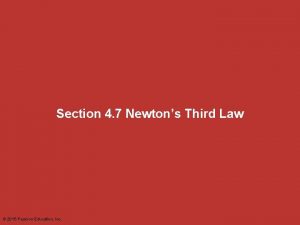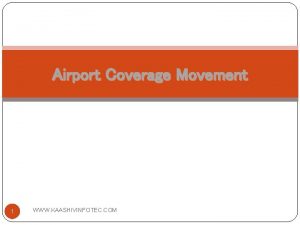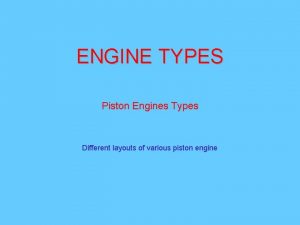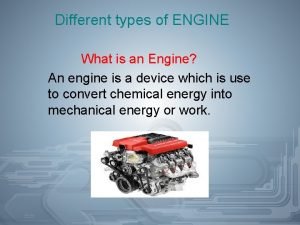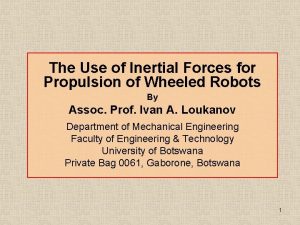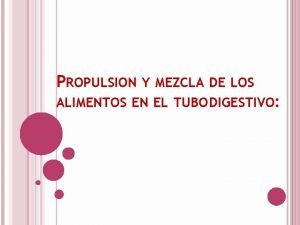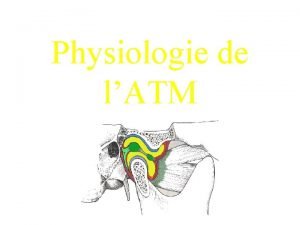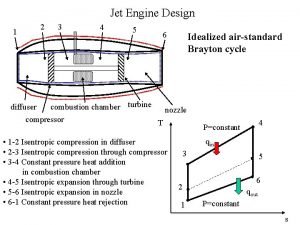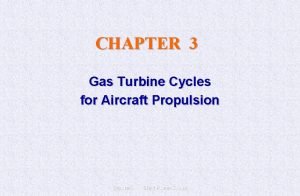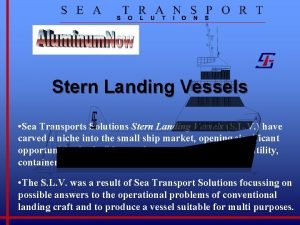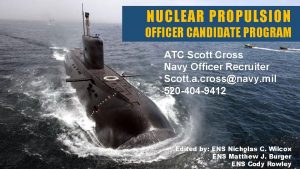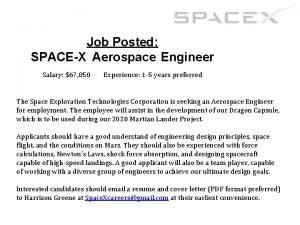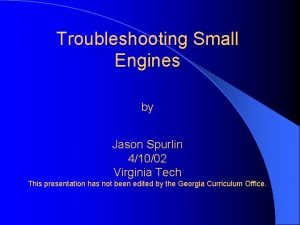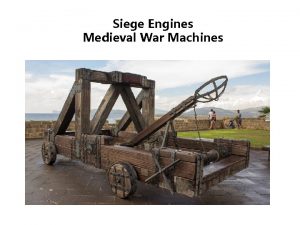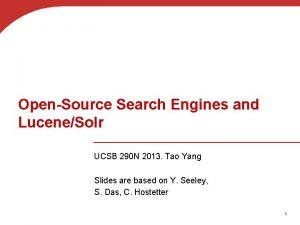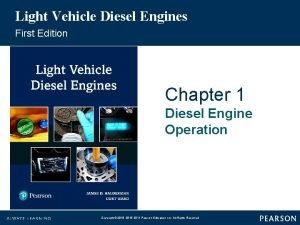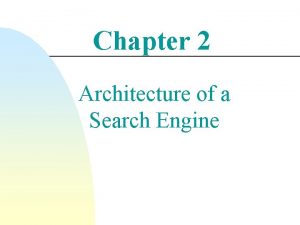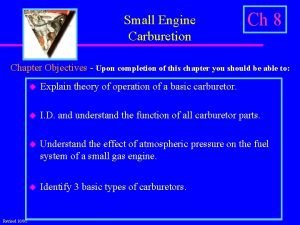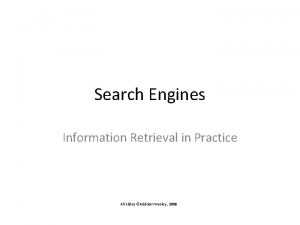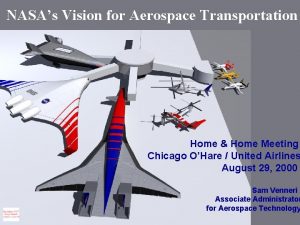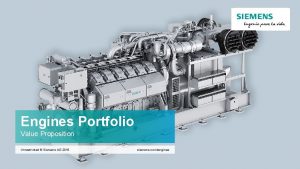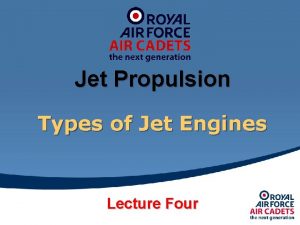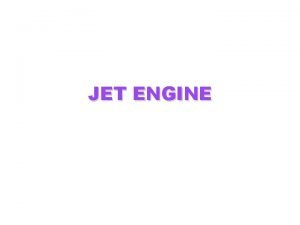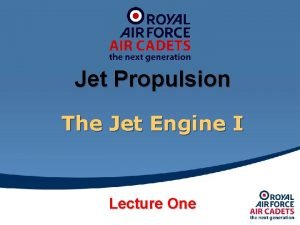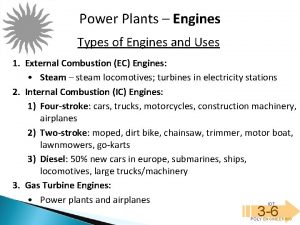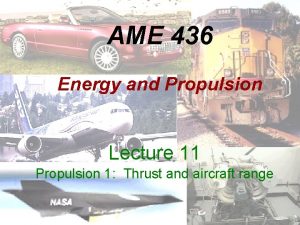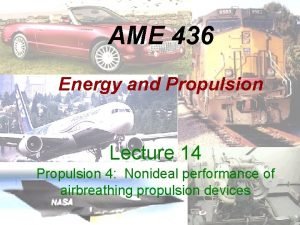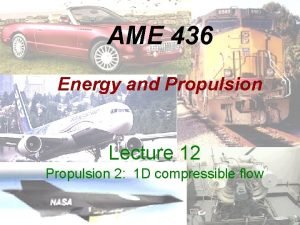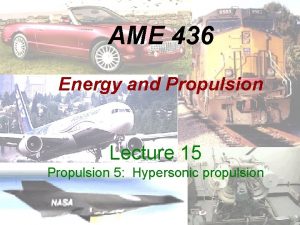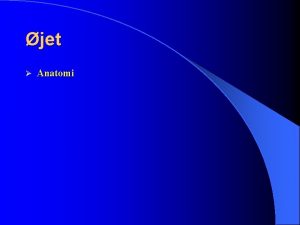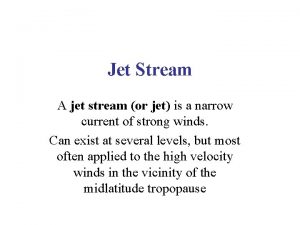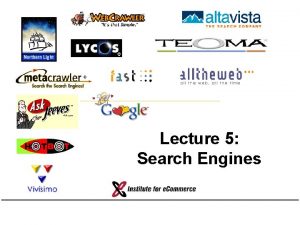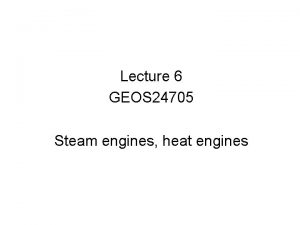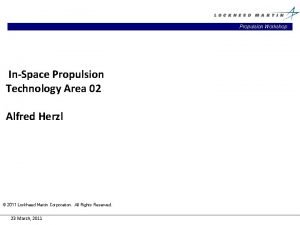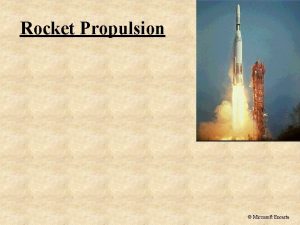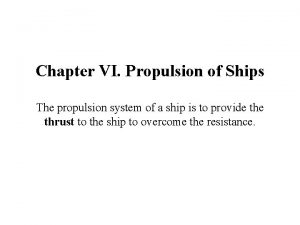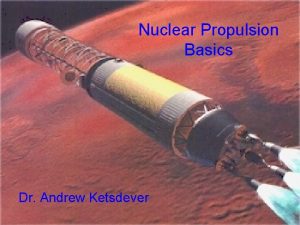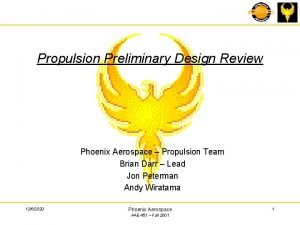Jet Propulsion Types of Jet Engines Lecture Three


































- Slides: 34

Jet Propulsion Types of Jet Engines Lecture Three

Engine Types There are FOUR basic types of Jet Engine Turbo Jet Turbo Fan Turbo Prop Turbo Shaft In this lesson we shall examine Turbo Jets and Turbo Fans.

Engine Types Turbo Jet Avon, Viper, Olympus 593 Turbo Fan or Bypass Engine LOW BYPASS Spey, BR 700 MEDIUM BYPASS Pegasus, BR 715, V 2500 LARGE BYPASS RB 211, Trent Series

Turbo Jet The turbojet is the simplest and earliest form of gas turbine. Used principally in high speed aircraft where a relatively low frontal area and high jet velocity are advantages. Low Frontal Area Examples are Concord, supersonic transports and a variety of military aircraft including the Dominie/HS 125.

Turbo Jet Rolls Royce Avon Single Shaft Turbo Jet Compressor Turbine In a Single Shaft layout the ratio of the turbine speed to the compressor speed is 1: 1

Turbo Jet Rolls Royce Avon At low rpm the rear of the compressor cannot get rid of all the air from the front of the compressor This can result in the rear end of compressor ‘choking’ So air blasts forwards Flame almost goes out - no power – no thrust. This is called: - COMPRESSOR SURGE So the surplus air needs to be ‘dumped’ overboard

Turbo Jet Rolls Royce Avon Rear end of compressor ‘unchoked’ Air dumped overboard Movement of air restored Power is Restored BUT air dumped sideways out of the engine produces no thrust, and is wasted. So a more efficient system was required

Turbo Jet The Olympus 593 The Two Shaft Layout Allows front end of compressor to slow down – move less air High Pressure Compressor driven andby High Pressure Turbine ` Low Pressure Compressor driven by Low Pressure Turbine Allows rear end of compressor to speed up – move more air Compressor surges lessened No wasted energy/thrust

Turbo Fan The main advantages of a turbofan (by-pass) engine are it reduces overall jet velocity giving, Improved Low Speed Efficiency, Lower Noise Levels and Improved Specific Fuel Consumption. Features which make the turbofan ideal for both civil and military aircraft.

Turbo Fan There are three types of by-pass engines, Low Bypass Engine, Medium Bypass Engine and High Bypass Engine.

Turbo Fan Rolls Royce Spey Adour BR 710 Series This improves propulsive efficiency Low Bypass Engine at lower aircraft speeds. Part of the air is compressed fully and passes (as core flow) into the combustion chamber. The remaining air is compressed to a lesser extent and bypassed around the hot section.

Turbo Fan Low Bypass Engine Rolls Royce Spey Adour BR 710 Series Schematic diagram of a simplified Low Bypass Engine

Turbo Fan Turbofan engines are loosely categorised by the size of the bypass compared to the core flow. By dividing the bypass mass air flow by the core engine mass airflow, the Bypass Ratio can be determined. The low bypass ratio is approximately 1: 1. Half the air goes through the core or hot section, the other half goes through the bypass. Medium bypass engines have a 5: 1 ratio, while High bypass have a ratio of 10: 1 or more.

Turbo Fan Medium Bypass Engine Pegasus The Pegasus medium bypass engine is unique in that it can provide forward thrust for normal flight, and Vertical Thrust for VSTOL operation. Vectored Thrust VSTOL manipulates the direction of thrust from the engine, Vertical Short Take-Off and Landing as used in the most successful BAe Harrier.

Turbo Fan Medium Bypass Engine Pegasus Schematic diagram of a simplified Medium Bypass Engine Fan Exhaust

Turbo Fan High Bypass Engine RB 211 Series (Trent) Three shaft layout Schematic diagram of a simplified High Bypass Engine In service with RAF – Wide-body Tanker/Transport Boeing 747 and later series, Airbus A 330 +

Engine Types Turbo Jet LOW BYPASS Turbo Fan MEDIUM BYPASS HIGH BYPASS Avon, Viper, Olympus 593 Spey, BR 700 Pegasus, BR 715, V 2500 RB 211, Trent Series

Check of Understanding Which of these is a turbojet engine? The Tyne The Olympus The Spey The Pegasus

Check of Understanding How is the bypass ratio of a bypass type jet engine determined? By the diameter of the fan and the length of the compressors By the difference between atmospheric pressure and bypass pressure By the diameter of the fan By dividing the bypass mass air flow by the core engine mass airflow

Check of Understanding The illustration shows a layout of one type of engine. What is this layout called? Turbojet Turbofan Low By-pass High By-pass

Check of Understanding Which application or type of operation best suits the turbojet engine? In low speed aircraft operating at high altitudes In high speed aircraft where low frontal area is an advantage In low speed aircraft operating at low altitudes In helicopters

Check of Understanding In a single shaft jet engine, what is the ratio of the turbine speed to the compressor speed? 10: 1 5: 1 2: 1 1: 1

Check of Understanding The illustration shows a layout of one type of engine. What is this layout called? Turbojet Low By-Pass Medium By-Pass High By-Pass

Check of Understanding Which of these is a turbojet engine? The Pegasus The Avon The Spey The Adour

Check of Understanding In a bypass engine, part of the air is fully compressed and is passed into the combustion chamber, whilst the remainder is compressed to a lesser extent and is ducted around the hot section. Which type of engine normally employs this system? Turboprop Turbofan Turbojet Turboshaft

Check of Understanding The illustration shows a layout of one type of engine. What is this layout called? Turbojet Turbofan Low By-Pass High By-Pass

Check of Understanding What does VSTOL stand for? Very Short Take-Off and Landing Vertical Stable Take-Off and Landing Very Stable Take-Off and Landing Vertical Short Take-Off and Landing

Check of Understanding In the turbofan engine, some air is not fully compressed and is made to bypass the combustion chamber thereby reducing the overall jet velocity. An important consequence is that : All the residual thrust is removed The propulsive efficiency at higher aircraft speed is improved The residual thrust is higher The propulsive efficiency at lower aircraft speeds is improved

Check of Understanding The illustration shows a layout of one type of engine. What is this layout called? Turbojet Low By-Pass Medium By-Pass High By-Pass

Check of Understanding Complete the sentence: Vectored thrust (or thrust Vectoring) …? Manipulates the direction of thrust from the engine Does not control the angular velocity of the aircraft Is a method of extracting more power from the internal combustion engine Is a means of jet engine afterburner

Check of Understanding A main advantage of a turbofan engine is: It can be used in helicopters It is mainly used on small light aircraft It is faster than a turbojet It has low speed efficiency

Check of Understanding The illustration shows a layout of one type of engine. What is this layout called? Turbojet Low By-Pass Medium By-Pass High By-Pass

Check of Understanding Which of these is a turbojet engine? The Pegasus The Viper The Spey The Adour

Jet Propulsion End of Presentation
 Squid use jet propulsion for rapid escapes
Squid use jet propulsion for rapid escapes Yelvington jet aviation aircraft fuel
Yelvington jet aviation aircraft fuel All engine layouts
All engine layouts What is displacement in cars
What is displacement in cars 01:640:244 lecture notes - lecture 15: plat, idah, farad
01:640:244 lecture notes - lecture 15: plat, idah, farad Inertial propulsion drive
Inertial propulsion drive Propulsión en el sistema digestivo
Propulsión en el sistema digestivo Diagramme de posselt définition
Diagramme de posselt définition Jet engine diffuser
Jet engine diffuser L-3 combat propulsion systems
L-3 combat propulsion systems Turbojet vs turbofan
Turbojet vs turbofan Landing
Landing Magnetic space propulsion
Magnetic space propulsion Nuclear propulsion officer candidate program
Nuclear propulsion officer candidate program Spacex engineers salary
Spacex engineers salary Siva de scalzo
Siva de scalzo Nuclear propulsion
Nuclear propulsion Andrew ketsdever
Andrew ketsdever демо
демо Troubleshooting small engines
Troubleshooting small engines Medieval war machines
Medieval war machines Advantages and disadvantages of meta search engines
Advantages and disadvantages of meta search engines Knowledge search engines
Knowledge search engines Meta search engine definition
Meta search engine definition Open source search engines
Open source search engines Light vehicle diesel engines
Light vehicle diesel engines Fuel saver plus
Fuel saver plus Edelman engines has 17 billion
Edelman engines has 17 billion Explain search engine architecture
Explain search engine architecture Other search engines
Other search engines Small gas engines chapter 8 answers
Small gas engines chapter 8 answers Information retrieval slides
Information retrieval slides Architecture search engines
Architecture search engines Aircraft engines
Aircraft engines Siemens gas engines
Siemens gas engines
